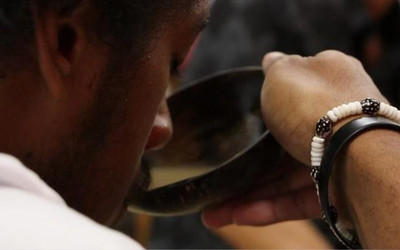Kava: Inebriation behind the wheel?
Best Fiji Kava on Sep 13th 2023
Kava, once used more ceremonially, is now becoming more popular in Western societies due to its positive psychoactive qualities. A growing portion of these new western users seek kava for its possible substitute for alcohol and benzodiazepine class drugs. It is noted by Sarris et al., [2] that differences in effects observed in research may relate to differences in preparations, quantity, and potency of the kava consumed. In small doses kava has been shown to possess a refreshing, calming, and anxiolytic effect. Larger quantities have been seen to produce stronger euphoria, tremors, and loss of fine motor control of the limbs and body. Extremely large doses can bring about an intoxication state known as ataxia, or slurred speech, stumbling, falling, and incoordination.
Therapeutic kavalactone dosages have been shown to hover in the range of 180-300mg per day. These dosages were not
found to have a negative effect on motor skills required for driving.
Recreational doses, however, can be considerably higher. This can range
to up to 2 grams of kavalactones [1].
Four cases were evaluated between 2011 and 2018 where drivers were
stopped, or further questioned, by Law Enforcement Officers due to signs
of impairment when driving. All four subjects admitted to having
consumed kava prior to being pulled over. All four provided urine
samples at the time of arrest which were tested, and they all returned
negative for other intoxicants except for alcohol in case 4.
The first subject in 2011 had run a stop sign which caused the officer
to pull them over. The case says the subject was mumbling, was
exhibiting very slow movements, had difficulty with manual dexterity,
watery bloodshot eyes, and extremely droopy eyelids. Quite amusingly,
the officer did remark the subject was polite and cooperative with him.
He tested at 0.000 when tested for alcohol impairment.
The second subject in 2012 was stopped during a vehicle safety check
point. The subject was detained due to gross signs of intoxication, and
suspicion of an open alcohol container. The subject admitted to the
officer that they had drunk a bottle of kava. The officer remarks that
the subject was cooperative, but slow to answer and was slurring their
speech. Again, the officer remarked on the persons bloodshot, watery
eyes and droopy eyelids. The subject admitted to drinking “a little bit
of beer”, however their blood alcohol content (BAC) was found at 0.000.
Case number 3 in 2017 involves a 48-year-old male. Officers stopped them
for driving erratically “all over the road”. He admitted to drinking an
“unknown” amount of kava. The offer remarked again about the subjects’
cooperative “laid-back” attitude with slow speech. Bloodshot watery eyes
and droopy eyelids were also noted. The subject was given a BAC test
and came back with 0.000 indicating no alcohol consumption.
In the last case in April of 2018 an officer stopped a 50-year-old male
in response to a call about a vehicle driving down the center of the
road. The subject admitted to drinking 2 cans of beer and having about
24 ounces of kava prior to his stop. The officer remarked that the
subject seemed slow and sluggish, but was cooperative. Eyes were
bloodshot. This instance the subject’s BAC came back at .0018 indicating
use of both alcohol and kava at the time. All four of these subjects
were arrested [3].
We should keep in mind that although kava is not a controlled substance,
the consumption of kava at large doses may hinder our ability to
operate a vehicle safely. If you have to question yourself before you
grab your keys, call a cab or a ride share. It’s just not worth it.
Don’t end up as a subject in a study like this one. Obviously, these
instances are rare, but as kava picks up steam it could become a more
pertinent issue. Stay safe, kava lovers.
[1] Wainiqolo I, Kool B, Nosa V, Ameratunga S. Is driving under the
influence of kava associated with motor vehicle crashes? A systematic
review of the epidemiological literature. Aust N Z J Public Health. 2015
Oct;39(5):495-9. doi: 10.1111/1753-6405.12435. Epub 2015 Sep 3. PMID:
26337520.
[2] Sarris J, LaPorte E, Schweitzer I. Kava: A comprehensive review of
efficacy, safety, and psychopharmacology. Aust N Z J Psychiatry.
2011;45:27-35.
[3] Berry J, Gilbert A, Grodnitzky J. Cases of Kava Impairment in Iowa Drivers. J Forensic Sci. 2019 Nov;64(6):1943-1949. doi: 10.1111/1556-4029.14130. Epub 2019 Jul 15. PMID: 31305953.
Kavaforums Discussion Thread:https://kavaforums.com/forum/threads/kava-inebriat...
*The content here presented above on kava and alternative health principles is for general information and facts only. Please don't take this information to spot, treat or heal any illness or medical conditions. Any health or safety related issues rising due to individual application of our products should be further researched. Therefore the advice of a medical professional is requested for hypersensitive reactions to unique ingredients.
